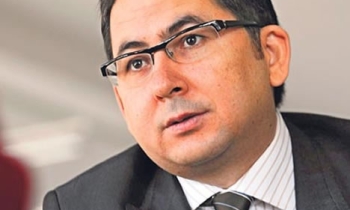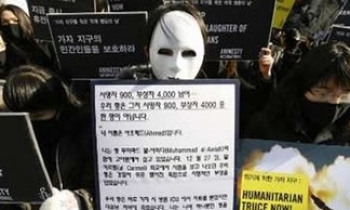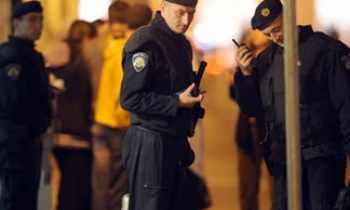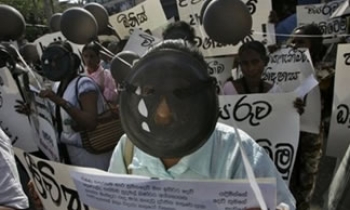MEXICO CITY - In the old days, working the news media during a Mexican presidential campaign was a pretty simple affair: The ruling Institutional Revolutionary Party, or PRI, routinely pressured and/or bribed newspapers and radio and television stations to run stories favorable to the government. For the most part, the media complied.
So airtight was the alliance between the major media and the political powers that be that during the 1988 presidential campaign, the main opposition candidate found it nearly impossible to break into the nightly news on the dominant Televisa network.
But over the past dozen years, changes in Mexican politics and society, combined with new systems for monitoring media coverage, have significantly altered the way political candidates are treated by the country's press, television and radio networks.
Compared with previous presidential races, the major media's coverage of this year's presidential campaign -- in which Felipe Calderón and Andrés Manuel López Obrador are the leaders -- was more open, balanced and impartial, say media analysts and electoral and party officials. [Mexico's Federal Electoral Institute enforced a three-day quiet period, silencing the war of radio and TV spots, before today's balloting.]
''There has been a very important process of opening that has been consummated in the last six years, and I believe that now there are many more spaces of debate and of discussion than in the year 2000,'' says Carmen Aristegui, a journalist who anchors her own nightly politics-oriented talk show Aristegui on CNN en Español. But while the media have grown impartial, the candidates themselves became more aggressive in searching out advan- tages to boost their media profiles and lower their opponents' images -- perhaps because no single party has a monopoly on power anymore.
The current campaign season, culminating with today's elections for president and both houses of Congress, saw a significant increase in the use of U.S.-style attack ads and other ''negative'' mass-media tactics that are new in Mexico.
Earlier this spring, the negative campaign rhetoric ratcheted up between candidates of the ruling National Action Party, or PAN, and the Democratic Revolution Party, or PRD, one of its two main rivals. The exchanges grew so harsh that a few weeks ago the Federal Electoral Institute, known by its Spanish initials, IFE, mandated that both campaigns should pull their attack ads.
In media coverage, observers detected ''sound-bite'' journalism and sensationalistic coverage that focuses on slander and squabbles among the candidates than on the issues. If campaign coverage was more equitable than before, they contend, it was also coarser and cheesier -- particularly on radio and television, where most Mexicans get their news.
Major media outlets such as Televisa and TV Azteca are more interested in surface than substance, said María Elena Meneses Rocha, director of the journalism studies program at Instituto Tecnológico y de Estudios Superiores in Monterrey, referring to Mexico's two main TV networks. ``The candidates have serious proposals, in economic questions, for example, social programs. The media aren't reflecting this. They only exalt the spectacle, the insults, the discrediting. And so the big national problems aren't put on the table.''
ROLE OF MEDIA
Collectively, these changes have produced a contradictory media-political culture that is simultaneously more restricted and more free-wheeling, more responsible in some ways but in others more reckless, than in prior years.
''The role of media? It's positive and negative at the same time,'' said political analyst Sergio Aguayo Quezada. ``Because there is no doubt that media has be-come a very important actor in terms of setting the agen-da and overseeing the government and publications.''
Attack ads flavored the campaigns of Calderón, the PAN candidate, and PRD candidate López Obrador, the left-leaning former Mexico City mayor known by his initials, ''AMLO.'' The two candidates have been running a close race in opinion polls, and López Obrador took the lead last week for the first time in months after hitting the airwaves with ads suggesting that Calderón's relatives got rich thanks to Calderón's position in government.
Calderón's ''anti-AMLO'' ads, for their part, have described the ex-mayor as ''a danger to Mexico'' who makes empty promises to the poor about creating social programs.
Early in the campaign, López Obrador appeared to be caught off guard by Calderón's attack ads, but after watching his front-runner status temporarily slip away this spring after he declined to participate in the first of two presidential debates, he countered with aggressive ads of his own, along with criticism aimed at Calderón and President Vicente Fox.
Meanwhile, the Calderón campaign has used the Internet to launch e-mail criticisms of López Obrador, analysts say. According to an IFE study, the Calderón campaign has spent $242,070 on Internet ads, more than any other presidential candidate. ''They have unleashed the worst campaign of hate and defamation that I have seen,'' says Carlos Monsiváis, one of Mexico's intellectuals and a López Obrador supporter. ``I believe since the campaign against Francisco I. Madero in 1911, '12 and '13, its equal hasn't been seen.''
PAST UPROARS
If the major media's coverage of the fray has grown more equitable, that's partly due to the uproars caused by elections past.
Public skepticism over the credibility and fairness of Mexico's electoral system spiked during the hotly disputed 1988 presidential election, won by the PRI, which dominated Mexican politics for 71 years. Media coverage of the subsequent presidential contest in 1994 was so lopsided that even the winning PRI candidate, Ernesto Zedillo, acknowledged the inequities.
Fallout from those two campaigns prompted the creation of a system to monitor media campaign coverage, both in terms of time allotted to candidates and the slant of the coverage. The IFE, a many-tentacled bureaucracy that registers voters and oversees elections, was put in charge of the monitoring process.
This year, the electoral institute kept tabs on 600 radio and television stations in 35 cities that account for nearly 90 percent of Mexico's total radio and television audience, says Andrés Albo, president of the Commission of Oversight of the Political Parties.
Millions of hours of programs were taped, measured for length and evaluated ''positive,'' ''negative'' or ''neutral,'' Albo says. Content analysis was done by IBOPE, a respected ratings and media research company that operates throughout Latin America.
The electoral institute also monitored campaign TV spots, billboards and bus cards. Albo says the various monitoring processes were the most extensive ever applied to a Mexican election season.
According to IFE statistics on the total number of seconds of radio and television news programs devo- ted to the top three of the five presidential candidates between Jan. 1 and April 30 -- Calderón, López Obrador and the PRI's Roberto Madrazo -- López Obrador led the pack. But Calderón had nearly three times as many campaign ads as López Obrador, and Madrazo more than twice as many.
''In general terms, I would say that the media are trying to treat the candidates in a fair way,'' Albo said. ``For us, transparency is the path to arrive at equity.''









